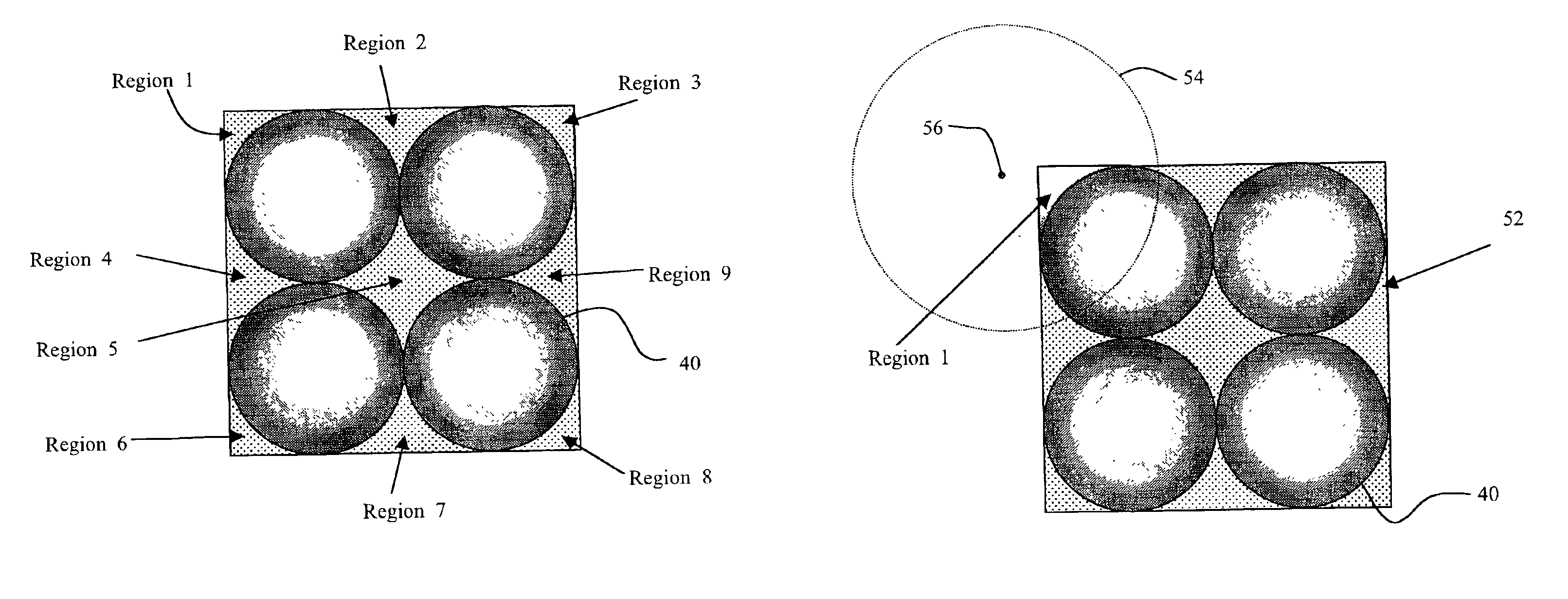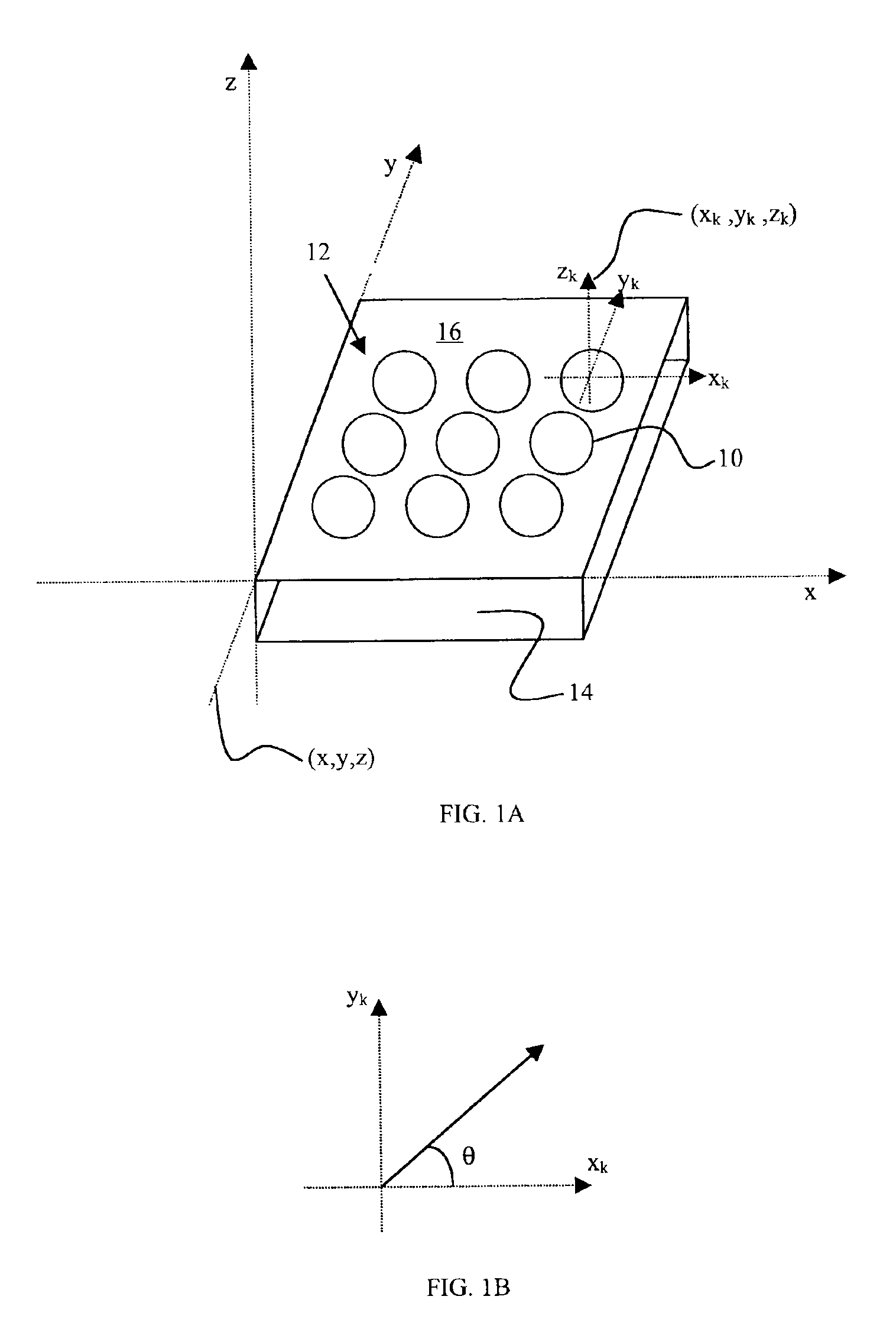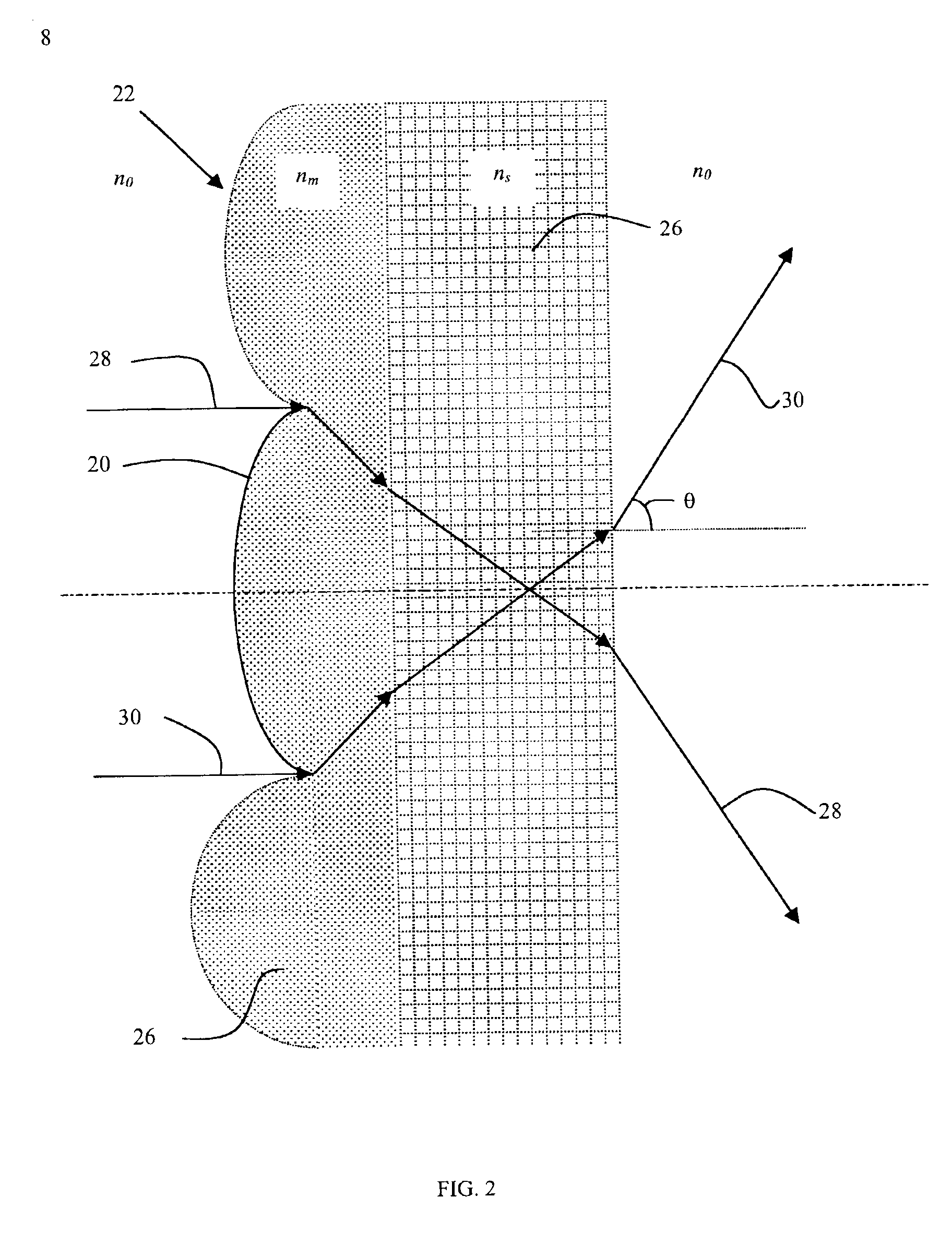Random microlens array for optical beam shaping and homogenization
a random microlens array and beam shaping technology, applied in the field of optical devices, can solve the problems of limiting the usefulness of methods, providing very limited beam shaping capabilities, and limiting the usefulness of holographic components to anything other than a gaussian spread of ligh
- Summary
- Abstract
- Description
- Claims
- Application Information
AI Technical Summary
Benefits of technology
Problems solved by technology
Method used
Image
Examples
Embodiment Construction
An embodiment of the invention referenced by FIGS. 1A and 1B relies on randomized microlenses 10 arranged in an array 12 on a substrate 14 to provide beam shaping and homogenization of input illumination. The substrate 14 upon which microlenses 10 are fabricated can be made from a variety of transmissive materials, including glass and plastic, that are capable of supporting or fabricating the microlenses 10. A surface 16 of the substrate 14 in which the microlenses 10 are formed can be divided into a number N of sections, where each section has identified with it a microlens structure, defined by particular values of a set of parameters. The microlenses 10 within each of the sections N of the substrate surface 16 can be defined by variables including radii of curvature, conic constants, and aspheric coefficients—all of a sag function mathematically representing the sag profile. The perimeter of an individual section N can assume any form such as a square, a rectangle, a hexagon, a p...
PUM
 Login to View More
Login to View More Abstract
Description
Claims
Application Information
 Login to View More
Login to View More - R&D
- Intellectual Property
- Life Sciences
- Materials
- Tech Scout
- Unparalleled Data Quality
- Higher Quality Content
- 60% Fewer Hallucinations
Browse by: Latest US Patents, China's latest patents, Technical Efficacy Thesaurus, Application Domain, Technology Topic, Popular Technical Reports.
© 2025 PatSnap. All rights reserved.Legal|Privacy policy|Modern Slavery Act Transparency Statement|Sitemap|About US| Contact US: help@patsnap.com



